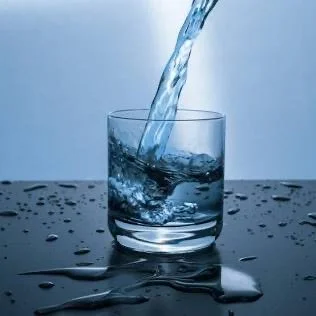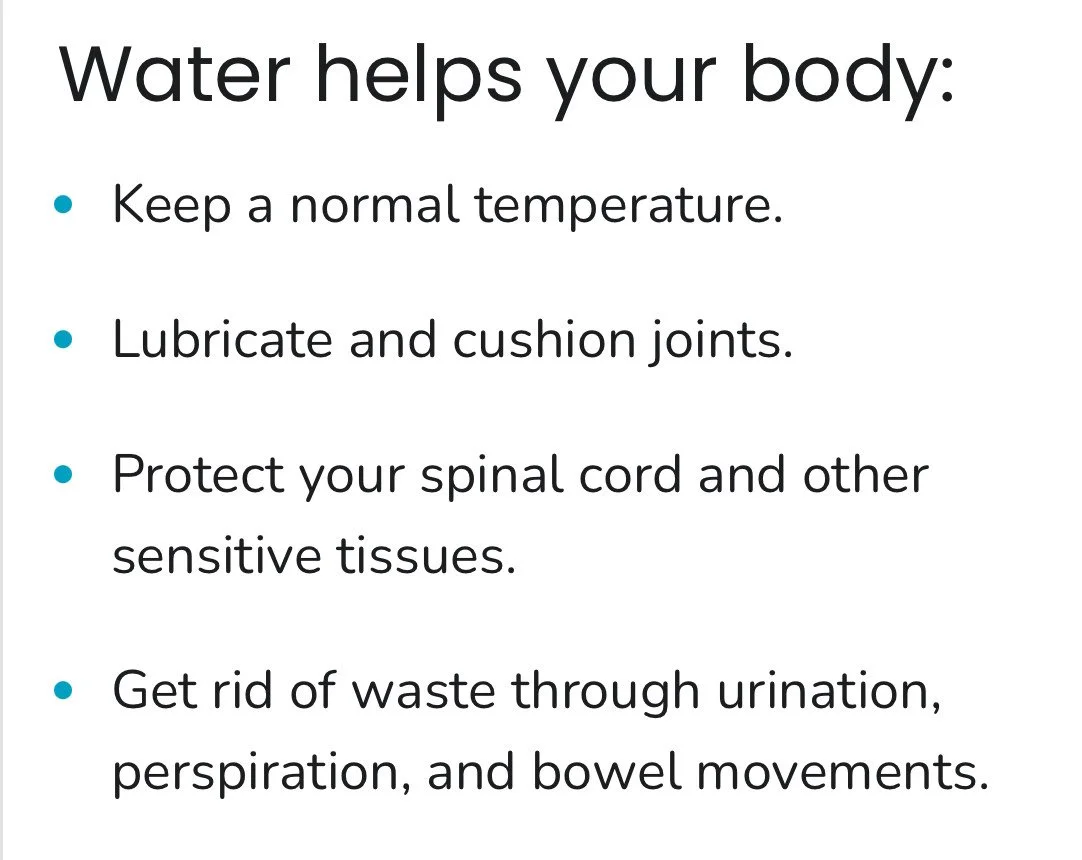Hydration Strategies for Athletes with Disabilities
For adults, the National Academies of Sciences, Engineering, and Medicine recommends a daily consumption of 15.5 cups of fluid for males and 11.5 cups for females. This includes fluids from all beverages including water. Athletes and physically active adults likely need more due to the increased amount of fluid they lose during physical activity. Losing anywhere from 2%-4% of one’s bodyweight due to sweating during physical activity, can lead to decreases in performance and several negative side effects such as cramping. Further water losses can lead to more severe injury risks including heat strokes and headaches. We can prevent this by paying attention to what we consume before, during, and after physical activity.
Water provides several benefits to the body including protecting our nervous system and joints, maintaining normal body temperatures, and getting rid of wastes. Being adequately hydrated is especially important for all athletes including those with disabilities. During exercise and sport, we lose water from sweating and breathing. Sweating is a means for the body to prevent overheating. Additionally, athletes who have been training for a while sweat more and quicker than untrained athletes, as they are more efficient at managing their body temperature. In addition to losing water during physical activity, we also lose important electrolytes, such as sodium, which we need to maintain proper bodily functioning. With that being said, so many other variables can influence how much we sweat during physical activity. Some of these include the temperature, humidity, duration of activity, intensity of activity, clothing, etc. Individuals with intellectual and developmental disabilities often have additional risk factors that increase their risk of dehydration such as a lower thirst sensation and appetite, conditions that increase nausea and vomiting, and oral health issues that can impair their ability to meet fluid intake requirements.
What to Drink Before a Workout
Drinking up to and immediately before a workout or game has the benefit of not only regulating body temperature but also hydrating our muscles and brain. To do so, the recommendation is to consume about .07 to .14 ounces of fluid per pound of bodyweight 2 to 4 hours before activity, which would be about 10-20 ounces of fluids for a 150 pound individual. If you suspect you will sweat a lot during activity, consider consuming sodium to aid in fluid retention. This could be as simple as consuming a salty snack or adding a little sodium to your drink.
What to Drink During a Workout
Reducing health conditions due to being inadequately hydrated and maintaining performance during physical activity can be offset by what we drink during it. Drinking fluids during physical activity can also maintain our blood volume. The recommendation is to consume anywhere from 13.5 to 27 ounces of fluid per hour as a starting point and could be higher. For example, the American Council of Exercise recommends 7-10 ounces of fluid every 10-20 minutes of activity. Some individuals will need more depending on their body size and other factors such as how much they sweat and the ambient temperature. If the activity makes you sweat a lot, consider consuming sodium during a workout, with recommendations of 300-600 mg per hour during physical activity.
What to Drink After a Workout
After a workout, keeping up on our hydration is important to help cool our internal temperatures and replace fluid lost from sweating and breathing. The recommendation is to consume about 19-23 ounces of fluid for every pound lost during activity. To get a reliable estimate of weight loss from activity simply weigh yourself before and after training and subtract the difference.
How Can We Tell If We Are Dehydrated?
There are several easy methods to determine how hydrated one is. One method is simply weighing yourself first thing in the morning. If you notice a downward trend this could suggest you need more fluids. Monitoring one’s urine color first thing in the morning is another method to determine hydration status. Generally darker urine may indicate one is not hydrated enough. However, several other things can make our urine darker such as some vitamin and mineral supplements. Lastly, thirst can sometimes be used as a method to determine if we need more fluids or not. However, this is not always accurate, and thirst sensations vary from individual to individual.
Food as a Water Source?
There are several foods that can contribute to our daily fluid intake. For example, fruits and vegetables are often high in water along with other nutrients. Other foods high in fluid intake include fish and yogurt. An article by Heidi Godman in the Harvard Health Letter, provides specific examples of such foods and their water content. Feel free to utilize some of these foods to help add to your daily fluid intake.
Possible Challenges Faced by Athletes with Disabilities
Athletes with disabilities may face unique challenges to being adequately hydrated on and off the field. If someone has a physical limitation this may make it more difficult for them to access water. This could be in the form of an impairment that manifests as a muscle weakness or a mobility issue. Making sure one carries a water bottle at all times and also consider using drinking aids such as straws or hands-free bottles can prevent some of these barriers. These strategies can also be employed if the facility has accessibility issues. Other strategies to address facility accessibility issues to water include making water stations more accessible.
Being properly hydrated is not only very important for our health, but also our physical performance. This begins with meeting our daily fluid recommendations and also using best hydration strategies immediately before, during, and after a workout. Athletes with disabilities may face additional challenges and factors that can impair their ability to meet fluid recommendations. Athletes with disabilities and their coaches need to be aware of these challenges to prevent dehydration and any negative repercussions resulting from it.
Why do we need
water
to stay
hydrated?
According to the United States Center for Disease Control and Prevention. (CDC)

